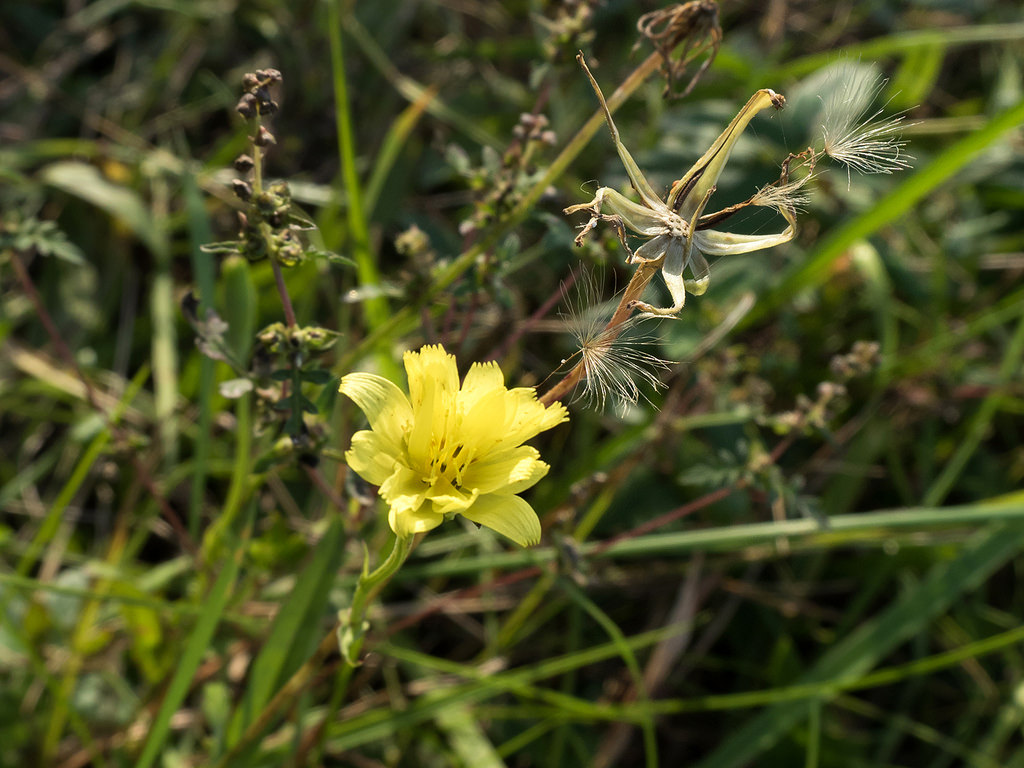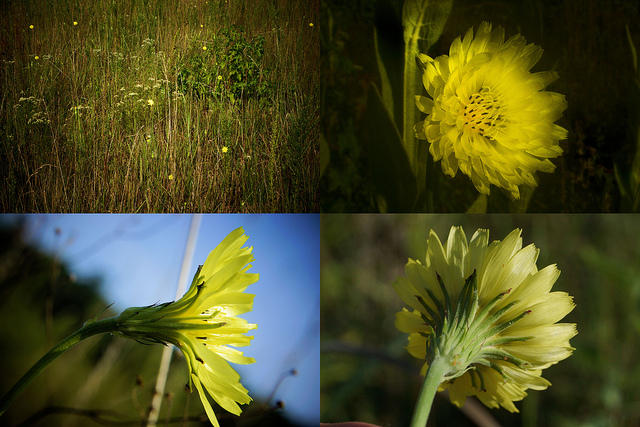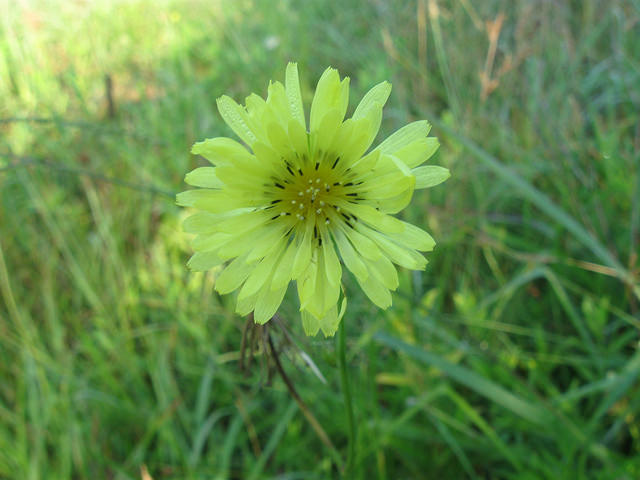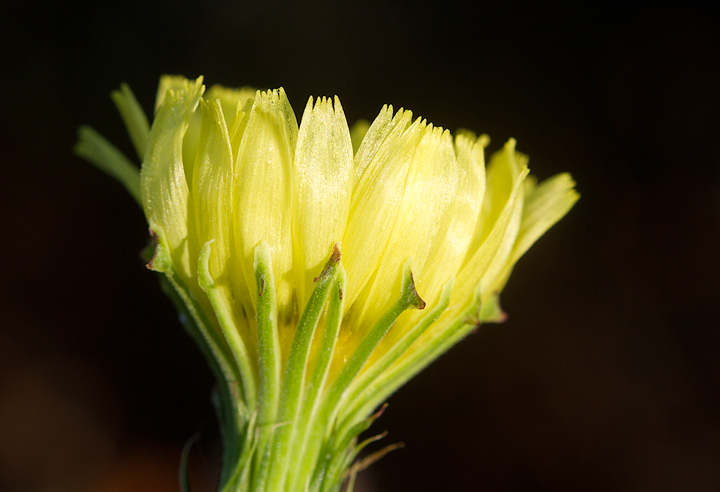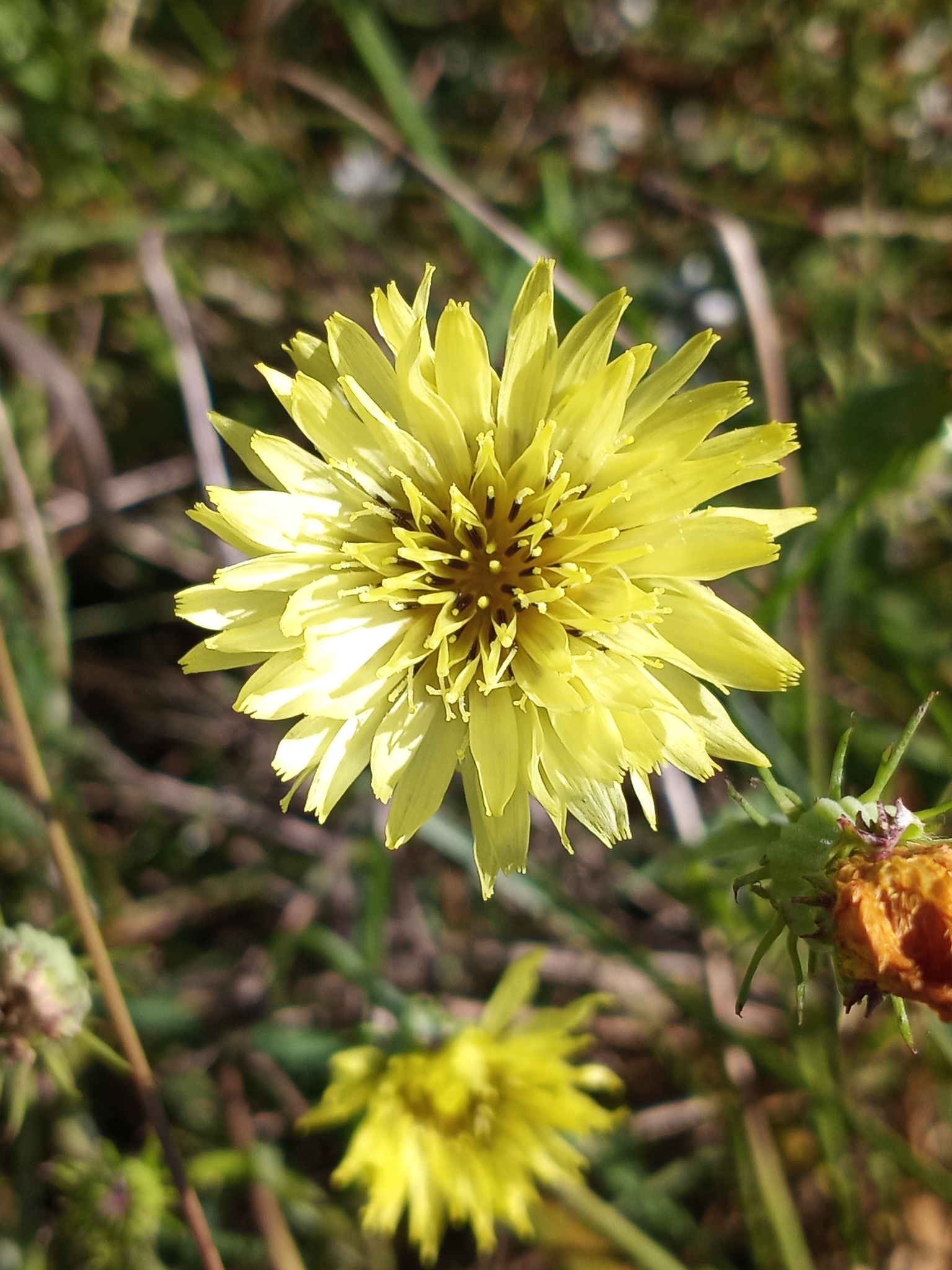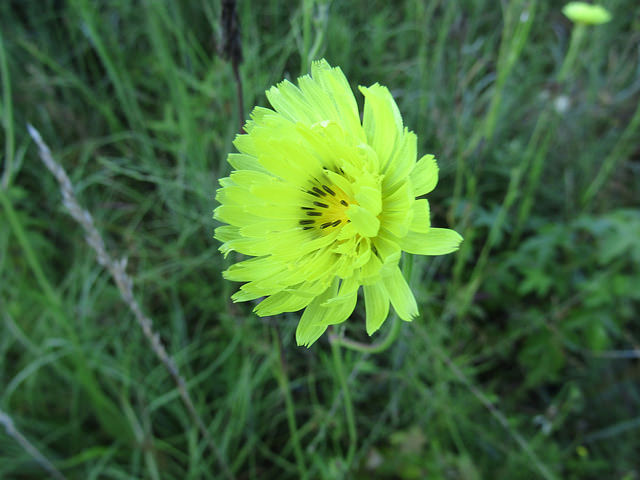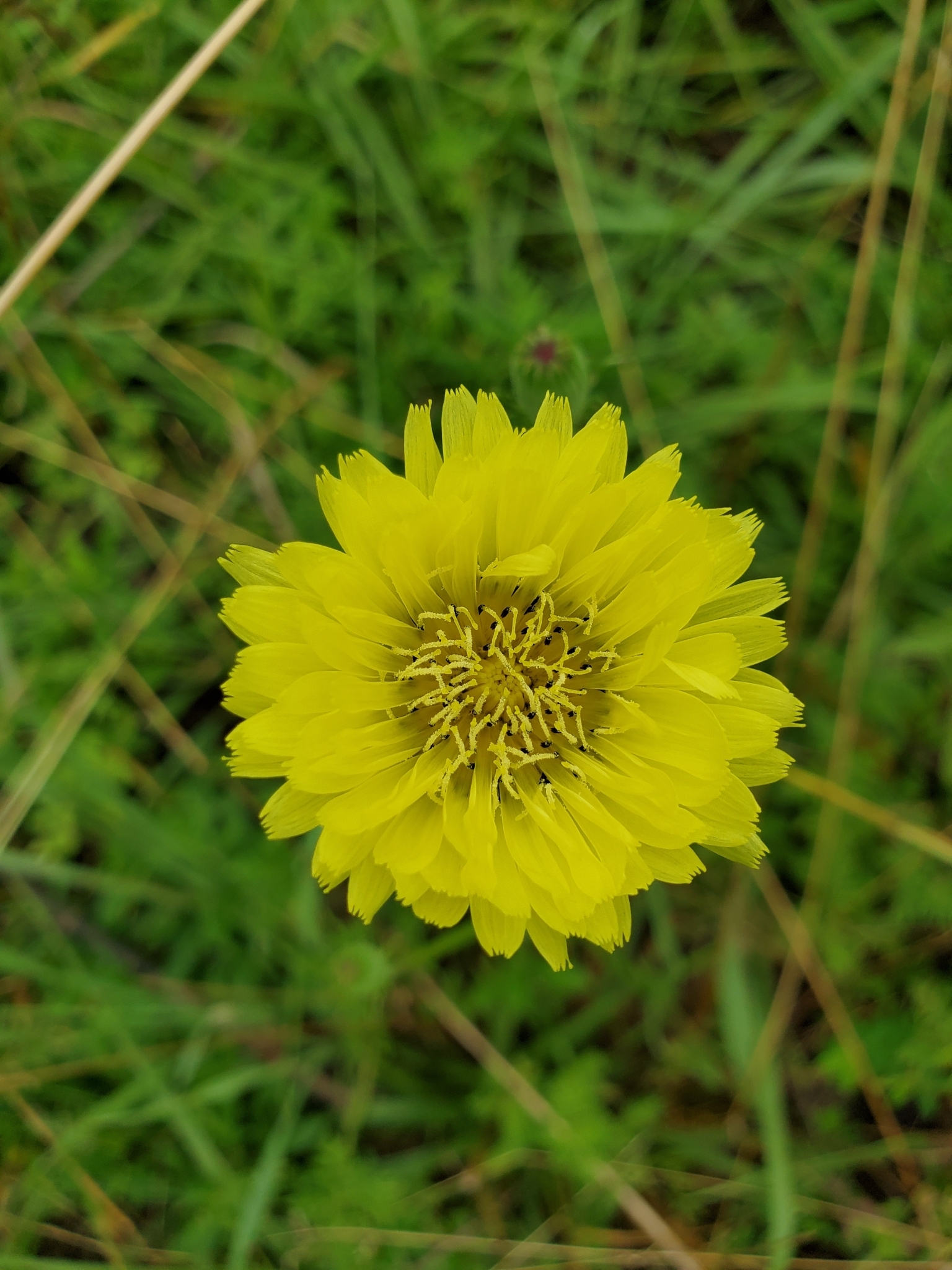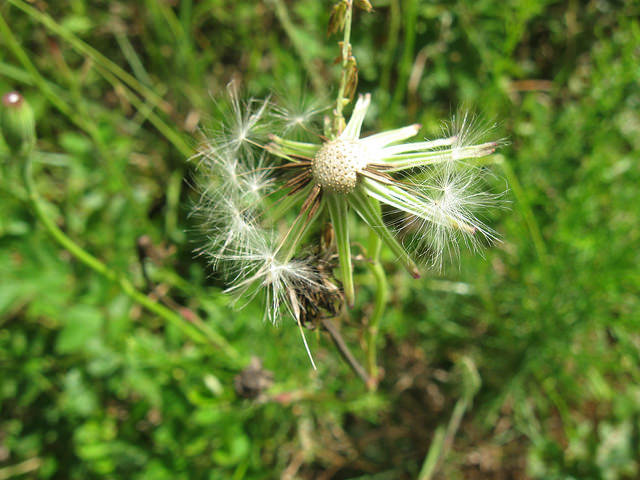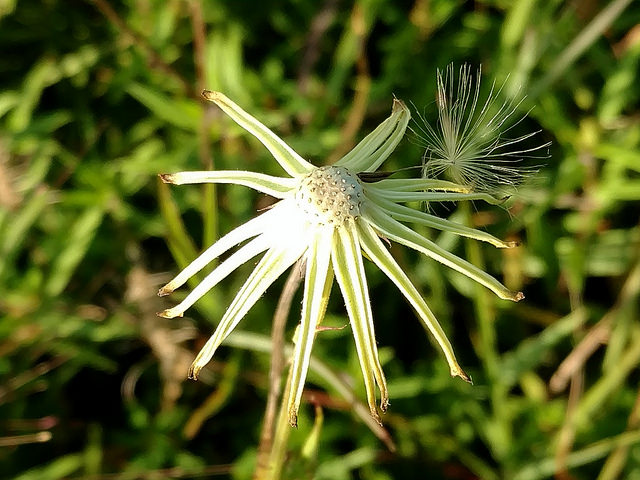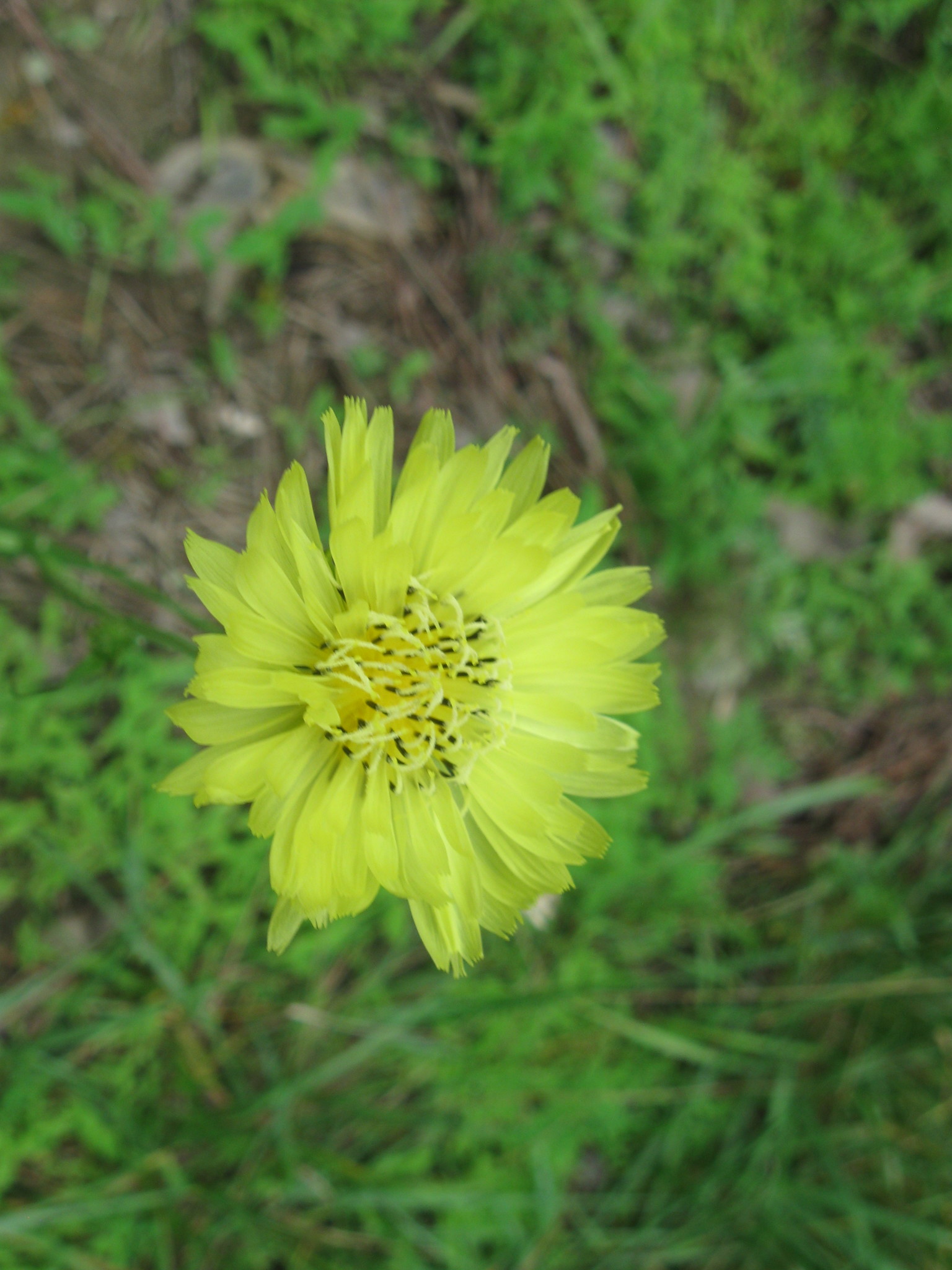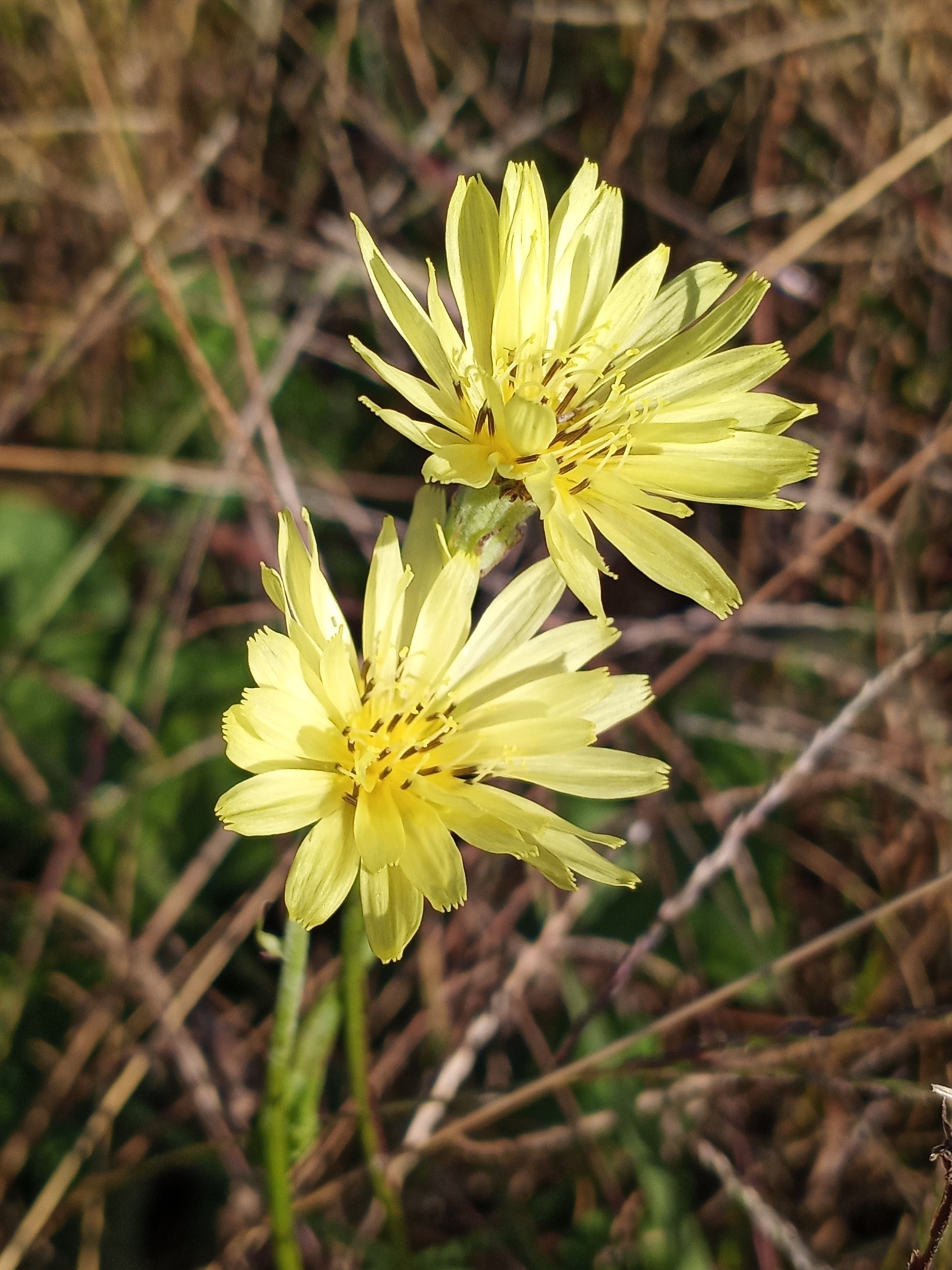Map Snapshot












83 Records
Seasonality Snapshot
Source: Wikipedia
| Pyrrhopappus carolinianus | |
|---|---|

| |
| Pyrrhopappus carolinianus at Goose Pond Fish and Wildlife Reserve, Indiana | |
| Scientific classification | |
| Kingdom: | Plantae |
| Clade: | Tracheophytes |
| Clade: | Angiosperms |
| Clade: | Eudicots |
| Clade: | Asterids |
| Order: | Asterales |
| Family: | Asteraceae |
| Genus: | Pyrrhopappus |
| Species: | P. carolinianus
|
| Binomial name | |
| Pyrrhopappus carolinianus (Walter) DC.
| |
| Synonyms | |
| |
Pyrrhopappus carolinianus, commonly called Carolina desert-chicory[1] or Texas dandelion, is in the genus Pyrrhopappus of the family Asteraceae, native throughout Eastern and South Eastern United States. It is an annual found in mostly open grasslands and wet roadsides. P. carolinianus can bloom from spring to frost with the heads facing the sun throughout the day.[2]
Description
[edit]Pyrrhopappus carolinianus can have more than one erect, flowering stem that can grow up to 50 centimetres (20 in) in length. The leaves are deeply lobed 5-15 centimeters long. The smaller upper leaves are slightly indented. The yellow flowers can be up to 3.75 centimetres (1.48 in) in width. As with other species in the family Asteraceae, it has ray and disc flowers, both of which are yellow.
Pollination
[edit]Oligolectic bees in the genus Hemihalictus have been found to pollinate the Carolina desert-chicory.[2]
References
[edit]- ^ USDA, NRCS (n.d.). "Pyrrhopappus carolinianus". The PLANTS Database (plants.usda.gov). Greensboro, North Carolina: National Plant Data Team. Retrieved 21 June 2016.
- ^ a b Estes, James R.; Thorp, Robbin W. (1975-01-01). "Pollination Ecology of Pyrrhopappus carolinianus (Compositae)". American Journal of Botany. 62 (2): 148–159. doi:10.2307/2441589. JSTOR 2441589.
